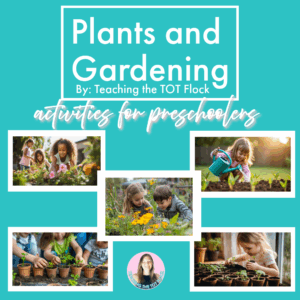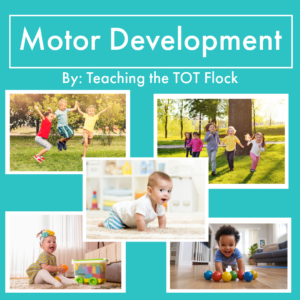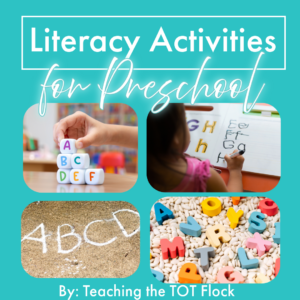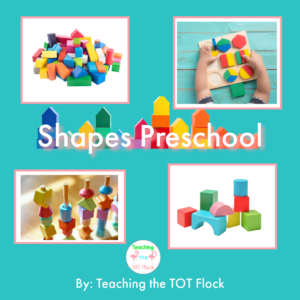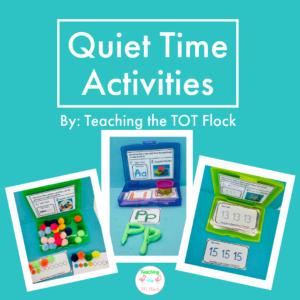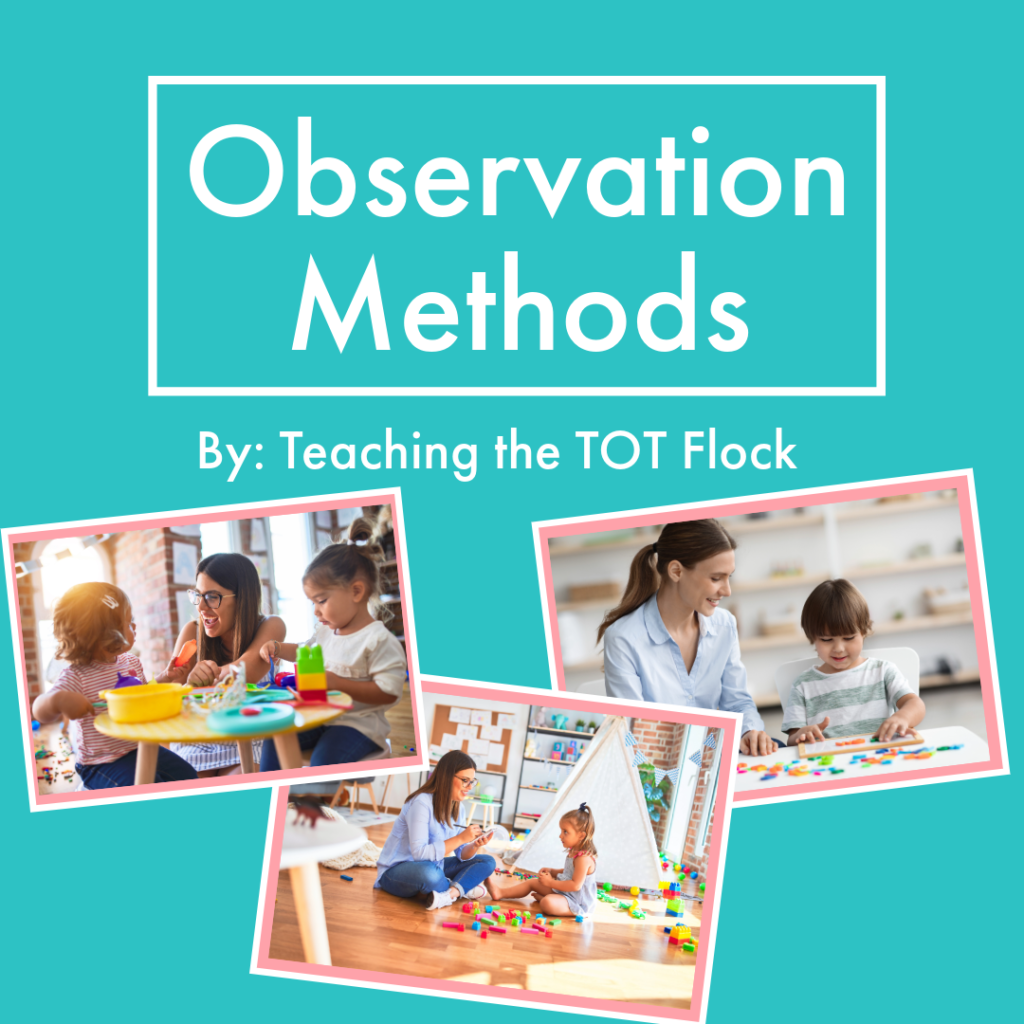
There are many observation methods a teacher can implement in their class. When it comes to teaching and observations with students, there are many roads you can choose. We have formal assessments, testing assessments, and observation assessments. Learning through observation can seem hard but this is the easiest and most natural form of assessment teachers can use.
Observations and assessments are a vital part of teaching and learning. This piece of the observation process is the planning stage. The results of our findings are the “what” we need to be teaching next and the “why” our job is so important. The main observation method for early childhood is naturalistic observation. This methodology of observing children in their natural environment is to see their actions and take meaningful notes for future learning.
Observation and Assessment
The main reason we use observation and assessment is to gain information about our students. The results are to assess their abilities to move towards mastery of skills. This stage in the observation process is the oversee stage.
Types of Observation
There are many types of observation that we can use as our main lens for learning. We can observe a child’s strengths and document where they thrive in their skills. Using a developmental timeline can be useful to see where a student is compared to other children in the same age group. This type of observation usually follows skills in domains such as social-emotional, physical, cognitive, and communication. We need to make sure that we use the results in a manner that helps the child. We also have to be mindful that all children develop at different rates and these outcomes might seem off when looking at a group of children and can cause concern when a pause is needed.
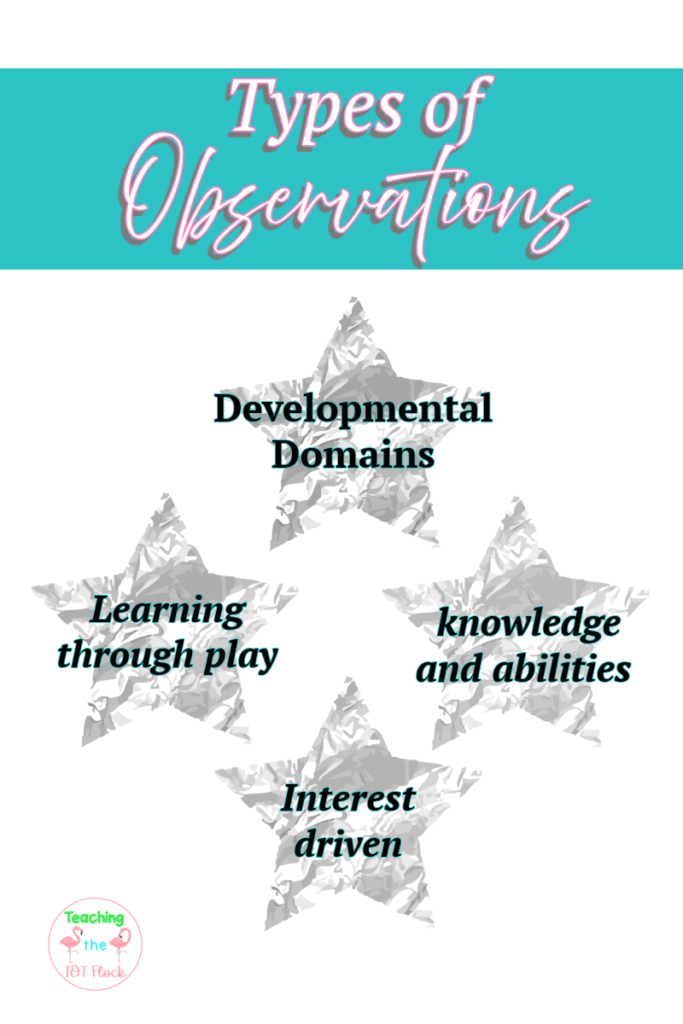
Observations for Learning
Observations with the lens of learning are to see how a child’s brain operates and how they approach life. This can be helpful to see if a child likes to observe an activity or dive right in and learn in real time. Furthermore, when we know our students; we will know when to push or wait to see how they respond. Observing a child with their interests might look similar to their strengths. A child’s interests can be a favorite toy, playing with a preferred peer, or both. The last two lenses that we can use as our observation focus our knowledge and abilities.
Knowledge refers to a child’s information and lessons that they have learned. When we know what lessons have been taught and how a child has used that knowledge to showcase their abilities then, we have succeeded as teachers. Abilities refer to the skills that a child has acquired over time. This stage of how we assess children is the reflecting stage.
Each lens that we choose to use with our observations will give us clarity in our students like peeling an onion. We need to use our observations to learn as much as we can about each child so they will all succeed and grow. How each child grows will be determined by how we use our assessments to learn how to teach skills in the future for each child. When we take our observations to make assessments of each child we are determining our deep understanding of that child and to determine how to improve their abilities with the next steps in learning.
Early Childhood Observations
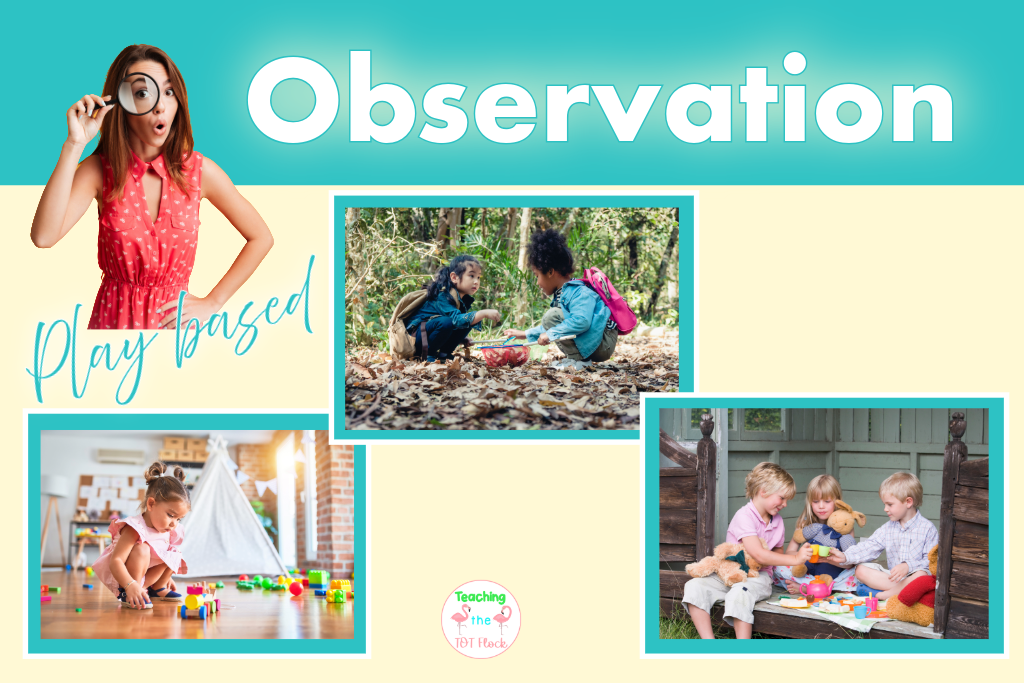
Now that we have our early childhood observations complete our next step is to look at the data to make an action plan with the next steps. Observations bring data and that data is what we take to turn into actionable lesson plans for all of our students. This piece of the observation and data puzzle is what I like to call the action stage. We take all of the collected research and create a plan to move forward to make our observations a success. This is the stage where we take all the documentation we collected to make a plan for implementation for further learning. As a result; this process might seem like it takes a long time, however; this process in early childhood can take as little as a few hours. The observation methods we choose to perform in our class will give us vital information to move forward in learning outcomes.
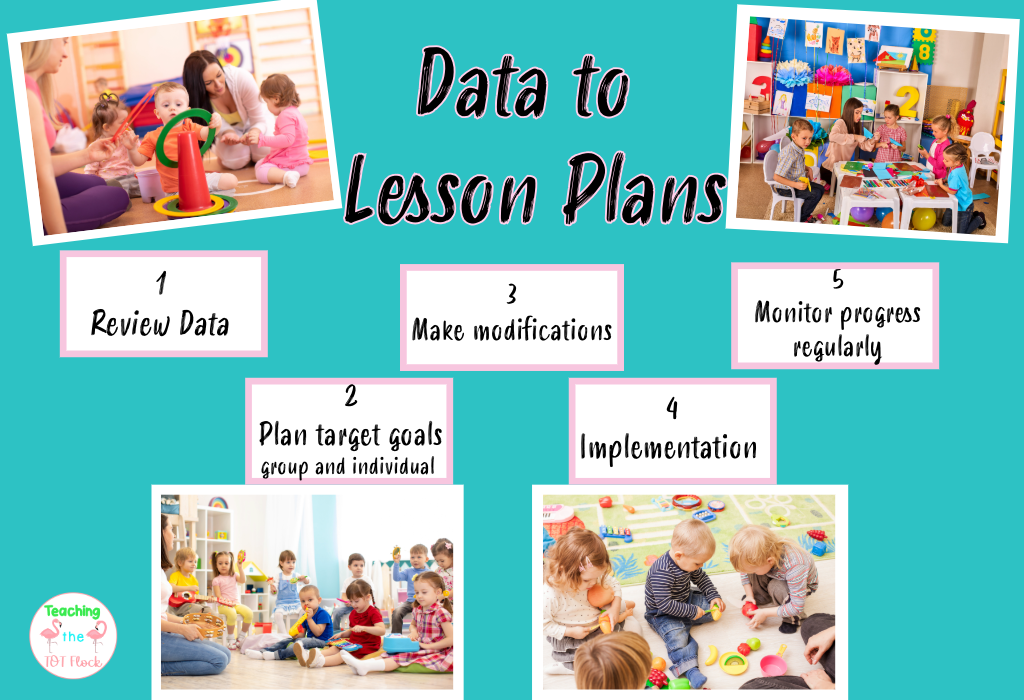
Observation of Play
Observation of play is the easiest and least restrictive method for observing young children. The best method that I use for observation is the OWL Method. This three-step process removes the guesswork from what to do during an observation. The O is to Observe, the W is to Wait, and the L is to Listen. This observation model can be easy to implement and used many times throughout the day. Check out the video below to learn more about the OWL observation methods.
Observation Guide
By breaking down each stage of observations, we make this topic more manageable and easy to understand. When teachers use observations regularly it makes their job easier. When we use the data to make decisions then we are giving our students exactly what they need to learn and be successful. Observational methods help us to stay focused on the goals that are vital for learning. Use this graphic to help keep you organized with your observation methods for your class.
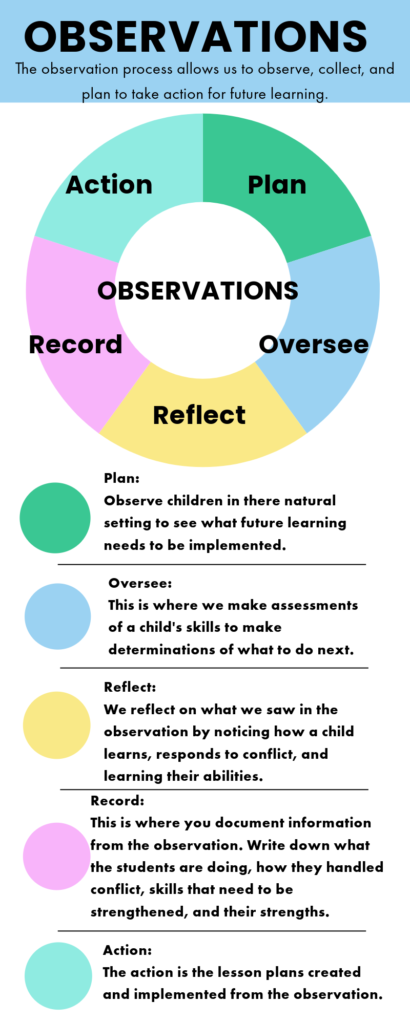
Download the Observation Guide Here:
Related Resources:
Assessing Toddler Development Through Observation
https://www.lillio.com/blog/assessing-toddler-development-through-observation
Why Observation
https://www.youtube.com/watch?v=fAaS-vljDL0
Observation Key to Understanding Your Child
https://www.naeyc.org/our-work/families/observation-key-to-understanding-your-child

